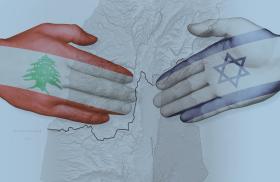A foreign policy fracas erupted last week when an Obama administration official slammed a New York Times story asserting that growth in Iran’s stockpile of enriched uranium–reported in an International Atomic Energy Agency update on Tehran’s compliance with its international obligations–presented an obstacle to negotiations over a U.S.-Iran nuclear agreement. In unusually caustic language, an administration spokesperson called the Times’s contentions “patently absurd” and “bizarre.”
The issue was technical: The “Joint Plan of Action” interim accord permits Iran to enrich uranium up to 5%—this is considered “low-enriched uranium”—while obligating it to cease enrichment above that level. The accord also commits Iran to cap its stockpile of uranium hexafluoride gas–the material that, if further enriched, could provide fuel for a nuclear weapon–by converting any newly produced low-enriched uranium and all uranium gas enriched to 20% into other forms.
Both lines of effort have faltered: Iran has made scant progress in converting its low-enriched into the powder form prescribed in the plan, or in turning its 20%-enriched uranium into fuel plates for its research reactor. While it’s possible that Iran could be preserving its stockpiles in case the nuclear negotiations collapse, the Obama administration has suggested, plausibly, that Iran is simply struggling to master unfamiliar processes and that Iran is not in violation of the joint plan because compliance with the caps is measured as of June 30, not on a rolling basis.
As important as this issue is, what’s more consequential is the U.S. response–both to Iran and in the public arena.
At the heart of these negotiations are opposing standpoints on Iran’s nuclear needs. Tehran insists that it must have indigenous capabilities to support a large-scale nuclear power industry. These capabilities–such as enriching uranium and research into the technologies needed to do so more efficiently–are inherently dual-use, suited to developing nuclear weapons as well as nuclear power. Notably, Iran seeks a nuclear fuel fabrication capacity that far outstrips its foreseeable civilian needs, and it has been caught in the past engaging in other weapons-applicable work. Thus the U.S. and its allies have sought to compel Iran to outsource, overseas, its nuclear fuel requirements, as most countries that generate nuclear power do.
Iran’s technical struggles as revealed by the IAEA should strengthen U.S. leverage in this debate. If Iran cannot master–or perhaps has never seriously prioritized–the technologies to produce reactor fuel, that is another argument for Iran obtaining that fuel from abroad rather than producing it indigenously. And if Iran cannot meet the generous caps laid out in the joint action plan, it is likely to have an even harder time meeting the more stringent stockpile restrictions and other technical demands of a final agreement. This suggests that more straightforward solutions, such as shipping Iran’s low-enriched uranium and other proscribed materiel abroad, should not only be preferred but may also be necessary to deter Iranian noncompliance.
The reporting based on the IAEA disclosures could, then, be a positive for the administration as it tries to negotiate a worthwhile deal with Iran. But its public reaction to the Times report—a news outlet certainly not considered to be slanted against the Obama administration–and responses to some nonproliferation experts who raised questions about the IAEA report were vehement, unequivocal, and, in some cases, ad hominem. This sort of response risks conveying to Iran and to others in the region and in Washington that the administration is closed-minded to reports suggesting Iranian noncompliance or flaws in the U.S. negotiating strategy–and that zealous enforcement of an agreement may take a backseat to U.S.-Iran comity. Amid U.S. efforts to demonstrate that Washington is determined to hold Iran to its commitments and will not give it a free pass for the sake of smooth relations, the reaction was ill-considered.
Michael Singh is managing director of the Washington Institute for Near East Policy. From 2005 to 2008, he worked on Middle East issues at the National Security Council.
Wall Street Journal



